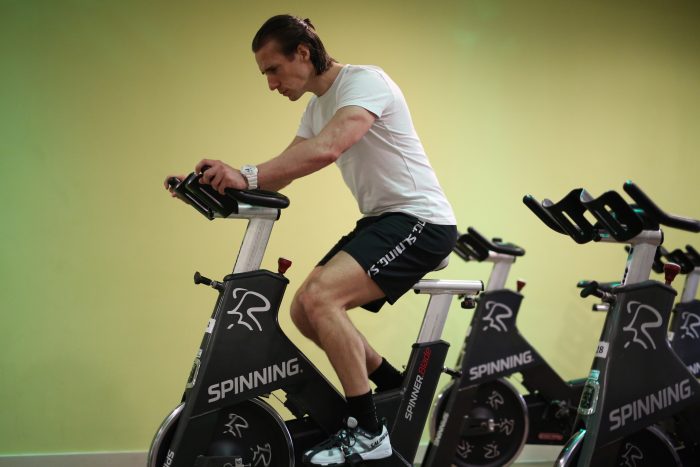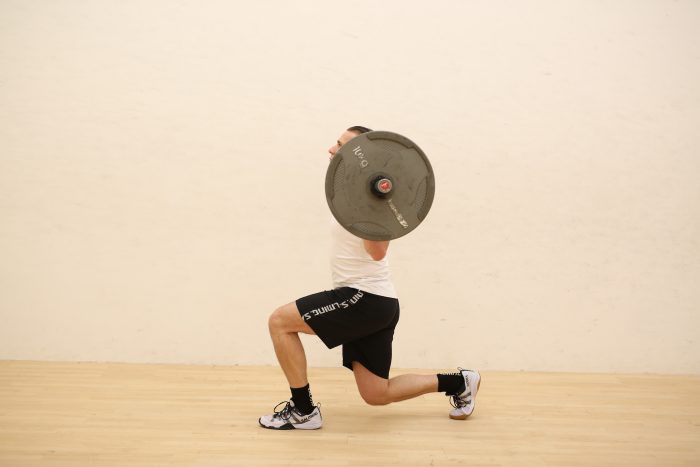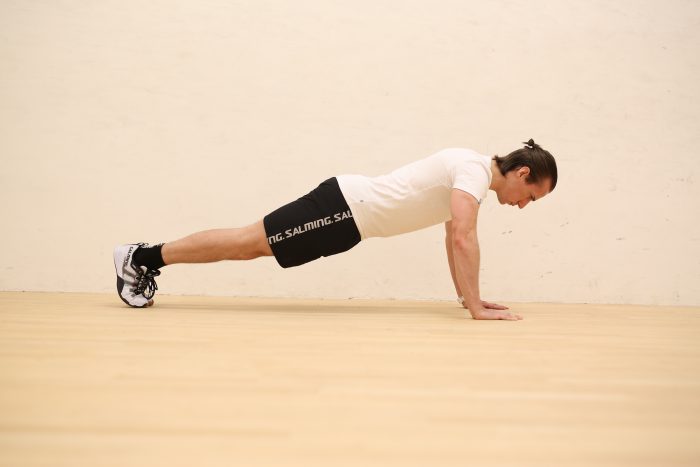With the Summer starting to creep in for those in the Northern Hemisphere, a lot of people’s minds turn to luxury vacations to exotic climes – or at least, weekend breaks out of town with the kids in tow! For the dedicated squash player however, the immediate concern naturally becomes: “But how will I keep up my training in Barbados/Tenerife/Skegness??”. The good news is, SquashSkills is here to help!
Perhaps the first thing worth pointing out, is that a holiday away is often actually the ideal time to rest your over-squashed aching joints. Even top professional players will have periods of the year where they take a complete rest from training, to allow their bodies and minds to recharge from the rigours of pounding around the court. Any good training programme should always include periods of structured rest or de-loading, and a vacation is often the ideal time to schedule this in.
If your holiday happens to fall slap bang in the middle of your training for the club championships however, and your significant other simply won’t take “But I NEED to be at the top of my game to be in with a chance of taking the C Grade Plate this year!” as reason to rearrange your entire holiday schedule, or you just simply can’t bear the thought of letting your squash fitness slip even a tiny bit while you’re away, then there are things that you can do.
A significant number of hotels now include gym facilities in their properties, albeit of vastly varying qualities. Most, if not all gyms however, are likely to contain some form of basic exercise bike, and some kind of free resistance (dumbbells, barbells, med balls etc.). And that, and a minimum of 30 minutes training time are all you need for our Squashskills Vacation Squash-Fit Workout:
 30 on 15 off Bike Sprints
30 on 15 off Bike Sprints
We’re going to start our session with a series of Bike Sprints, consisting of 30sec max-effort intervals to 15sec slow pace active recovery intervals. 1 set will consist of 15 effort intervals in total, to be similar to the amount of rallies that may take place in a single game of squash. After completing the 15 reps, you’ll rest completely for 90-120secs and then repeat for 2 to 3 total sets – building up to 5 for the truly hardcore who want to really closely mimic a full competitive match.
Make sure that you push your effort sets to the maximum pace you can sustain for the 30sec period each time, setting yourself an RPM & resistance level target on the machine where applicable (something around +100rpm and around 50% of max resistance level will generally be a good starting point).
To make this session tougher, instead of increasing the volume or duration of efforts, try reducing the recovery period. Reducing your sets even just to a 30sec effort to a 10sec recovery period can make this a particularly tough workout, and will mirror even better the average effort/rest durations in a standard squash match.
 Weighted Lunge > Speed Lunge
Weighted Lunge > Speed Lunge
Next, we’re going to go into our Lunge exercises. The Lunge is a staple part of any resistance training programme geared toward developing squash-specific leg strength, and is also great for enhancing the functional range of motion in the hip region.
For this session, we’re going to work from a resisted lunge straight into a much faster match-specific lunge. Use either a pair of dumbbells, a barbell, or a med ball for resistance (or even one of your own bags packed with gear, if there are no better options in the gym!). For most players, anywhere between 10kg and 20kg is a good place to start, and work along with the following technique guidelines:
• Start standing upright, feet together
• Step out to a comfortable distance, keeping the torso upright and core held tight
• Pause briefly, with the front knee joint held at approximately 90 degrees
• Push back to start position by simultaneously driving through both thigh (quads) and buttocks (gluteals)
• Ensure buttocks and hip of the rear leg also engage on the return, to aid efficiency and stability of the movement
• Alternate legs throughout the set
Complete 12 total repetitions (6 on each leg). Immediately upon finishing your final repetition, put the weight down and go straight into 20 short fast lunges, at your maximum pace. With these, try and visualize lunging into the corner for a counter drop or similar, and really focus on making them as quick and as squash-specific as possible. Upon completion of the two contrasting sets back to back, rest for 2mins and repeat for 3 to 5 total sets.

Stability Plank
Finally, we’re going to finish our workout with our Stability Plank exercise – great for training the important stabilizing muscles of our core and hip area. Our technique is as follows:
• Start by supporting your body weight on your forearms at the front, and your toes at the back, hip-width apart – no other part of your body will be in contact with the floor during the exercise
• Keep your elbows directly beneath your shoulders at all times, and try and feel your shoulders braced within their sockets
• Draw your belly button in and contract all of the muscles in and around your abdominals, glutes, lower back, and hip flexors
• Aim to keep your spine as ‘long’ as possible, by extending your head away from your backside
• Try not to just ‘balance’ – imagine you’re almost trying to squeeze and drag your toes forward and elbows back, but without actually moving
• Remain completely still and stabilized, and take deep slow breaths
A proper plank should be held for no more than about 30secs, and should be an all-out maximal contraction of the relevant muscle groups. If you can hold a plank for longer than about 45secs, then you’re probably not doing it right – we’re looking to develop strength and stability here, not endurance. Repeat your 30sec deep hold plank for 3 sets, with a 90-120sec break between each one.
No hotel gym? No problem! Check out part 2 for our vacation workout for times when space is at a premium, and the only equipment you have is your own bodyweight!
Gary Nisbet
B.Sc.(Hons), CSCS, NSCA-CPT, Dip. FTST
SquashSkills Fitness & Conditioning Director
Sign up to the SquashSkills newsletter
Get world class coaching tips, straight to your inbox!